Showing Spotlights 1193 - 1200 of 2797 in category All (newest first):
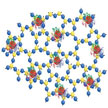 The development of sustainable, robust, energy-efficient and cost-effective water purification technologies is a challenging task. Conventional practices adopted for water purification suffer from certain limitations such as high cost, low adsorption capacity, generation of toxic sludge, etc. A possible solution to tackle this problem has been demonstrated by scientists in India. They developed nanotechnology-based water purification using nano-silica-silver composite material as antifouling, antimicrobial and dye adsorptive material.
The development of sustainable, robust, energy-efficient and cost-effective water purification technologies is a challenging task. Conventional practices adopted for water purification suffer from certain limitations such as high cost, low adsorption capacity, generation of toxic sludge, etc. A possible solution to tackle this problem has been demonstrated by scientists in India. They developed nanotechnology-based water purification using nano-silica-silver composite material as antifouling, antimicrobial and dye adsorptive material.
May 6th, 2014
 Taking the approach of flexible electronics one step further, researchers now have integrated all-carbon based electronic devices to live plants and insects. They developed an unconventional approach for the in situ synthesis of monolithically integrated electronic devices based on single-walled carbon nanotube channels and graphitic electrodes. The highly flexible transistors were formed directly by the in situ synthesis using patterned metal catalyst films and subsequently could be transferred to both planar and nonplanar substrates, including papers, clothes, and fingernails.
Taking the approach of flexible electronics one step further, researchers now have integrated all-carbon based electronic devices to live plants and insects. They developed an unconventional approach for the in situ synthesis of monolithically integrated electronic devices based on single-walled carbon nanotube channels and graphitic electrodes. The highly flexible transistors were formed directly by the in situ synthesis using patterned metal catalyst films and subsequently could be transferred to both planar and nonplanar substrates, including papers, clothes, and fingernails.
May 2nd, 2014
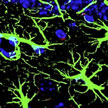 Prevention and treatment of neurological disorders in humans necessitate delivery of therapeutic or neuroprotective agents across the so-called blood-brain barrier (BBB) into the brain. The scarcity of techniques for brain-specific delivery of therapeutic molecules using non-invasive approaches has led researchers to increasingly explore the promising potential of nanotechnology toward the diagnosis and treatment of diseases/disorders incurable with present techniques. A recent example of these efforts is the research to analyze the intra- and intercellular transport and fate of novel nanoparticles for drug delivery to the central nervous system.
Prevention and treatment of neurological disorders in humans necessitate delivery of therapeutic or neuroprotective agents across the so-called blood-brain barrier (BBB) into the brain. The scarcity of techniques for brain-specific delivery of therapeutic molecules using non-invasive approaches has led researchers to increasingly explore the promising potential of nanotechnology toward the diagnosis and treatment of diseases/disorders incurable with present techniques. A recent example of these efforts is the research to analyze the intra- and intercellular transport and fate of novel nanoparticles for drug delivery to the central nervous system.
May 1st, 2014
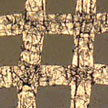 Graphene's piezoresistive effect, combined with its other properties such as ultra-translucency, superior mechanical flexibility and stability, high restorability, and carrier mobility, enables the use of graphene in high-sensitivity strain sensors. Potential application areas for these sensors could be found in flexible display technology, robotics, smart clothing, electronic skin, in vitro diagnostics, implantable devices, and human physiological motion detection - which has been considered as an effective approach to evaluate human health. To demonstrate this application, researchers have now reported on a method to monitor human motions.
Graphene's piezoresistive effect, combined with its other properties such as ultra-translucency, superior mechanical flexibility and stability, high restorability, and carrier mobility, enables the use of graphene in high-sensitivity strain sensors. Potential application areas for these sensors could be found in flexible display technology, robotics, smart clothing, electronic skin, in vitro diagnostics, implantable devices, and human physiological motion detection - which has been considered as an effective approach to evaluate human health. To demonstrate this application, researchers have now reported on a method to monitor human motions.
Apr 30th, 2014
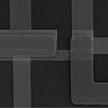 Most of the accomplishments in building carbon nanotube circuits have come at the single-nanotube level. Researchers have been struggling with two major obstacles in building CNT-based circuits: the presence of metallic CNTs and a 'perfect' alignment of nanotubes. In new work, researchers have now demonstrated the ability to fabricate, in a scalable manner, larger-scale CNFET circuits at highly scaled technology nodes. The channel lengths are ranging from 90 nm to sub-20 nm.
Most of the accomplishments in building carbon nanotube circuits have come at the single-nanotube level. Researchers have been struggling with two major obstacles in building CNT-based circuits: the presence of metallic CNTs and a 'perfect' alignment of nanotubes. In new work, researchers have now demonstrated the ability to fabricate, in a scalable manner, larger-scale CNFET circuits at highly scaled technology nodes. The channel lengths are ranging from 90 nm to sub-20 nm.
Apr 29th, 2014
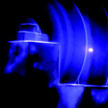 EUV lithography was first included in the next-generation lithography road maps in the early 90s, but after about 20 years it is not yet ready for prime time. In this article we briefly analyze the history of EUV in the last 2 decades and the situation as of today. Extreme ultraviolet technology posed and still poses formidable challenges as it is based on principles vastly different from conventional DUV (deep ultraviolet) lithography.
EUV lithography was first included in the next-generation lithography road maps in the early 90s, but after about 20 years it is not yet ready for prime time. In this article we briefly analyze the history of EUV in the last 2 decades and the situation as of today. Extreme ultraviolet technology posed and still poses formidable challenges as it is based on principles vastly different from conventional DUV (deep ultraviolet) lithography.
Apr 24th, 2014
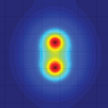 In the past decades, the Density Functional Theory (DFT) has been very successful in helping chemists and physicists understand the properties of matter at extremely small scales. Although some problems still remain in the standard implementation of DFT, it represents an important theoretical tool which is used on a daily basis. Scientists now propose a variant of the standard DFT which could pave the way towards the simulation of very complex chemical and physical systems at a quantum level.
In the past decades, the Density Functional Theory (DFT) has been very successful in helping chemists and physicists understand the properties of matter at extremely small scales. Although some problems still remain in the standard implementation of DFT, it represents an important theoretical tool which is used on a daily basis. Scientists now propose a variant of the standard DFT which could pave the way towards the simulation of very complex chemical and physical systems at a quantum level.
Apr 22nd, 2014
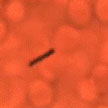 While nanotechnology researchers have made great progress over the past few years in developing self-propelled nano objects, these tiny devices still fall far short of what their natural counterparts' performance. Today, artificial nanomotors lack the sophisticated functionality of biomotors and are limited to a very narrow range of environments and fuels. In another step towards realizing the vision of tiny vessels roaming around in human blood vessels working as surgical nanorobots, researchers have now demonstrated, for the first time, externally driven nanomotors that move in undiluted human blood.
While nanotechnology researchers have made great progress over the past few years in developing self-propelled nano objects, these tiny devices still fall far short of what their natural counterparts' performance. Today, artificial nanomotors lack the sophisticated functionality of biomotors and are limited to a very narrow range of environments and fuels. In another step towards realizing the vision of tiny vessels roaming around in human blood vessels working as surgical nanorobots, researchers have now demonstrated, for the first time, externally driven nanomotors that move in undiluted human blood.
Apr 17th, 2014
 The development of sustainable, robust, energy-efficient and cost-effective water purification technologies is a challenging task. Conventional practices adopted for water purification suffer from certain limitations such as high cost, low adsorption capacity, generation of toxic sludge, etc. A possible solution to tackle this problem has been demonstrated by scientists in India. They developed nanotechnology-based water purification using nano-silica-silver composite material as antifouling, antimicrobial and dye adsorptive material.
The development of sustainable, robust, energy-efficient and cost-effective water purification technologies is a challenging task. Conventional practices adopted for water purification suffer from certain limitations such as high cost, low adsorption capacity, generation of toxic sludge, etc. A possible solution to tackle this problem has been demonstrated by scientists in India. They developed nanotechnology-based water purification using nano-silica-silver composite material as antifouling, antimicrobial and dye adsorptive material.
 Subscribe to our Nanotechnology Spotlight feed
Subscribe to our Nanotechnology Spotlight feed





